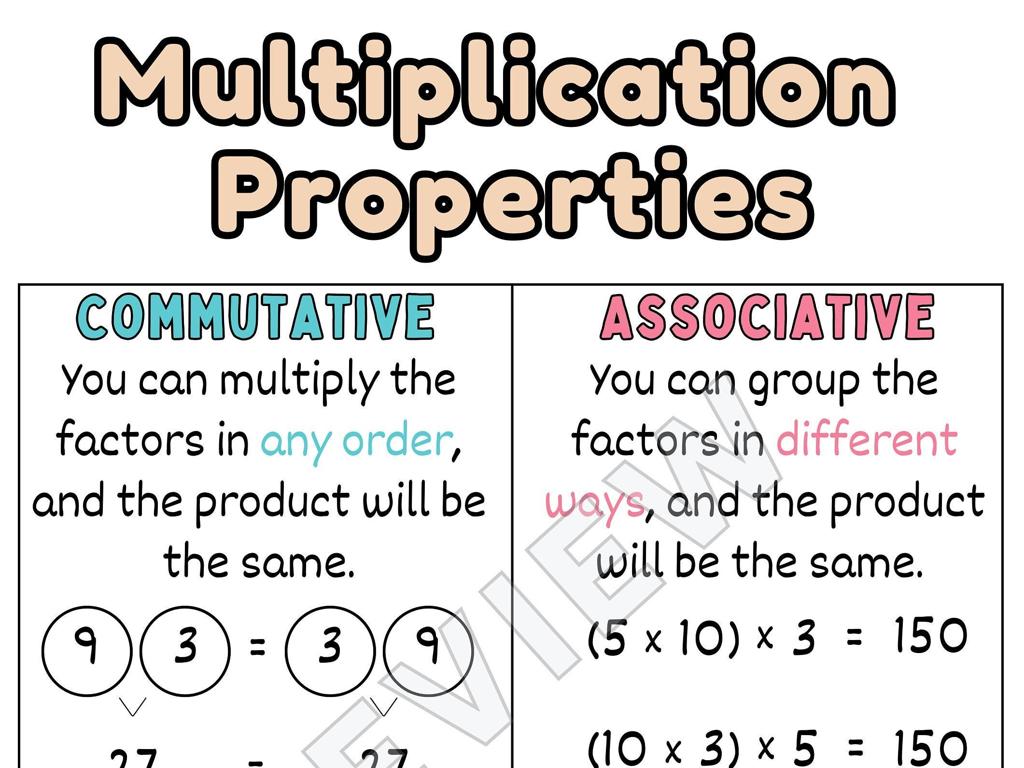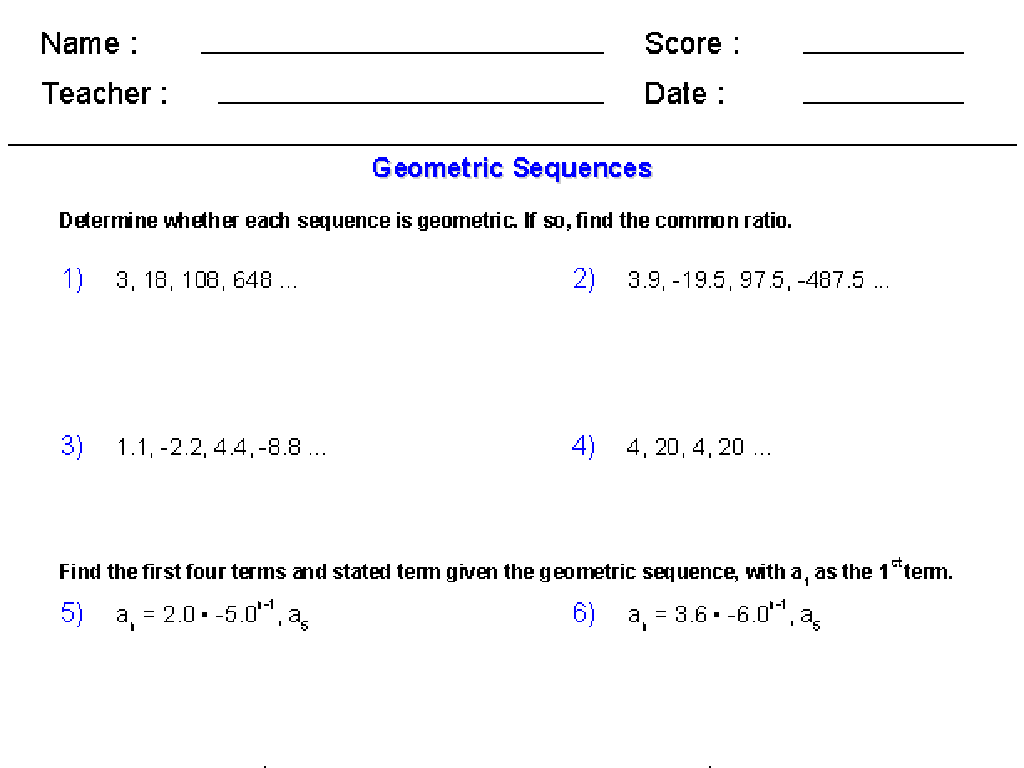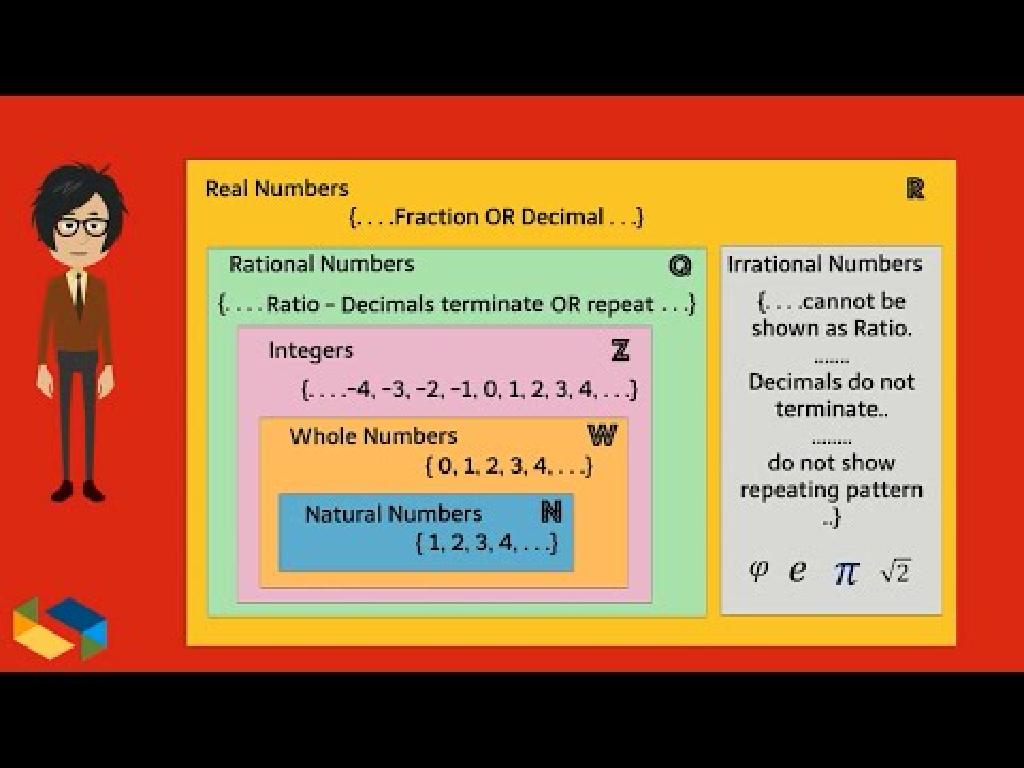Correct Errors With Indefinite Pronoun-Verb Agreement
Subject: Language arts
Grade: Seventh grade
Topic: Subject-Verb Agreement
Please LOG IN to download the presentation. Access is available to registered users only.
View More Content
Mastering Subject-Verb Agreement
– Grasp subject-verb agreement basics
– Every subject matches its verb in number
– Importance of coherent sentences
– Clear communication relies on grammatical sentences
– Today’s focus: Indefinite Pronouns
– Indefinite pronouns can be singular or plural
– Ensuring correct verb agreement
– Match singular pronouns with singular verbs, and plural ones with plural verbs
|
This slide introduces the concept of subject-verb agreement and narrows down to the specific topic of indefinite pronoun-verb agreement. Start by explaining that for a sentence to be grammatically correct, the verb must agree in number with its subject. Emphasize the importance of this agreement in making sentences clear and understandable. Clarify that indefinite pronouns, such as ‘everyone’ or ‘few’, can be particularly tricky as they do not refer to a specific number of people or things. Provide examples to illustrate how singular indefinite pronouns (e.g., ‘anyone’, ‘each’, ‘nobody’) take singular verbs, while plural indefinite pronouns (e.g., ‘many’, ‘few’, ‘several’) take plural verbs. Encourage students to practice by creating sentences with indefinite pronouns and selecting the correct form of the verb.
Understanding Indefinite Pronouns
– Define indefinite pronouns
– Words that do not refer to a specific person, place, or thing
– Examples: ‘someone’, ‘anything’, ‘each’, ‘none’
– ‘Someone left their bag’, ‘Anything is possible’, ‘Each of the players has a coach’, ‘None of the cookies were eaten’
– Contrast with definite pronouns
– Definite pronouns point to specific items, indefinite pronouns do not
– Usage in sentences
– Ensure verb agreement: ‘Everybody is’ vs. ‘All are’
|
This slide introduces the concept of indefinite pronouns, which are pronouns that do not specify the nouns they replace. Provide clear examples to illustrate how they are used in sentences. Highlight the difference between indefinite and definite pronouns, emphasizing that indefinite pronouns do not point to a specific entity. Discuss the importance of verb agreement with indefinite pronouns, which can be singular or plural depending on the context. Encourage students to practice by creating sentences with different indefinite pronouns and selecting the correct verb form to match.
Singular vs. Plural Indefinite Pronouns
– Indefinite pronouns: singular forms
– Words like ‘anybody’, ‘each’, ‘neither’ are always singular
– Contextual singular or plural pronouns
– ‘All’, ‘any’, ‘none’, ‘some’ can be singular or plural based on the noun they refer to
– ‘All’, ‘any’, ‘none’, ‘some’ usage
– Use context to determine if these pronouns are singular or plural in a sentence
– Practice with example sentences
– ‘All of the cookies are gone.’ vs. ‘All of the cookie is gone.’
|
This slide introduces students to the concept of indefinite pronouns and how they can agree with verbs in either singular or plural form. Start by explaining that some indefinite pronouns, such as ‘everyone’, ‘each’, ‘neither’, ‘anybody’, are always singular and must be followed by a singular verb. Then, discuss pronouns like ‘all’, ‘any’, ‘none’, ‘some’, which can be singular or plural depending on whether they refer to a singular or plural noun. Provide examples and ask students to create sentences using these pronouns to ensure they understand how context determines the number agreement. Encourage students to look for clues in the sentences to decide the correct verb form to use.
Mastering Indefinite Pronoun-Verb Agreement
– Singular pronouns require singular verbs
– ‘Everybody wants’ not ‘want’
– Plural pronouns pair with plural verbs
– ‘Many are’ not ‘is’
– Use context to find the right verb form
– Clues in the sentence guide verb choice
– Practice with examples
– ‘Someone has’ vs. ‘Some have’
|
This slide focuses on the rules for matching verbs to indefinite pronouns, a key component of subject-verb agreement. Emphasize that singular indefinite pronouns (e.g., anyone, everyone, someone) always take singular verbs, while plural indefinite pronouns (e.g., few, many, several) require plural verbs. Contextual clues within a sentence can help determine the correct verb form. Provide students with examples and exercises to apply these rules. For instance, ‘Everybody wants to succeed’ uses a singular verb, whereas ‘Many are called, but few are chosen’ uses a plural verb. Encourage students to look for signal words and phrases that indicate whether a pronoun is singular or plural.
Mastering Indefinite Pronoun-Verb Agreement
– Examples of incorrect agreement
– ‘Everyone are happy’ should be ‘Everyone is happy’
– Impact of mistakes on meaning
– Incorrect agreement can confuse or mislead the reader
– Tips for correct verb agreement
– Match singular pronouns with singular verbs, and plural with plural
– Practice makes perfect
|
This slide aims to help students identify and correct common errors in indefinite pronoun-verb agreement. Start by showing examples of incorrect agreement and then the corrected versions. Discuss how these mistakes can alter the intended meaning of a sentence and lead to confusion. Provide students with tips to ensure correct agreement, such as remembering that indefinite pronouns like ‘everyone’ and ‘nobody’ are singular and require singular verbs. Encourage students to practice by creating their own sentences and checking for correct agreement. This will reinforce their understanding and help them avoid these common errors in their writing.
Let’s Practice: Indefinite Pronoun-Verb Agreement
– Identify correct verbs in examples
– Correct errors in practice sentences
– Explain reasons for verb choices
– Discuss how the verb changes with singular or plural indefinite pronouns
– Class activity: Verb agreement quiz
– Students will take turns correcting sentences on the board
|
This slide is designed for a class activity to practice indefinite pronoun-verb agreement. Start by showing examples of sentences and identifying the correct verbs together. Then, provide sentences with common errors for students to correct. Discuss why certain verbs are correct, focusing on the agreement between indefinite pronouns and verbs. For the activity, create a quiz where students correct sentences on the board, explaining their reasoning. This interactive approach reinforces learning and allows for immediate feedback. Possible activities include peer review of sentences, creating their own sentences with correct verb agreement, and a worksheet for individual practice.
Class Activity: Crafting Sentences with Indefinite Pronouns
– Create sentences with indefinite pronouns
– Exchange with a partner for error checking
– Ensure verbs agree with pronouns like ‘everyone’, ‘nobody’
– Discuss the sentences in groups
– Share how you corrected any mistakes
– Understand pronoun-verb agreement
– Why is it important for pronouns and verbs to agree?
|
This activity is designed to reinforce the concept of subject-verb agreement with indefinite pronouns. Students will apply their knowledge by creating their own sentences, then work with a partner to identify and correct errors. Afterward, groups will discuss the sentences and the corrections made, fostering a deeper understanding through collaboration. As a teacher, facilitate the exchange and guide the discussion to highlight why pronoun-verb agreement is crucial for clear communication. Possible activities: 1) Students write sentences on the board for class review. 2) Pairs create a small poster with their sentences and corrections. 3) Groups come up with rules for pronoun-verb agreement. 4) Each student writes a short paragraph using indefinite pronouns correctly.
Homework: Mastering Indefinite Pronoun-Verb Agreement
– Complete the pronoun-verb worksheet
– Create two original sentences
– Use indefinite pronouns and choose the right verbs
– Justify your verb choices
– Think about why the verb fits the pronoun
– Share and discuss in the next class
|
This homework assignment is designed to reinforce the lesson on indefinite pronoun-verb agreement. Students are expected to complete a worksheet that provides practice on this topic, ensuring they understand how to match verbs correctly with indefinite pronouns. Additionally, they are tasked with creating two sentences using indefinite pronouns, which will require them to apply the rules they’ve learned. They should be prepared to explain the grammatical reasoning behind their verb choices, promoting deeper understanding. In the next class, students will have the opportunity to share their sentences and explanations, allowing for peer learning and teacher feedback. This activity will help solidify their grasp of subject-verb agreement with indefinite pronouns.
Wrapping Up: Indefinite Pronoun-Verb Agreement
– Recap: Indefinite Pronoun-Verb Rules
– Indefinite pronouns like ‘everyone’ or ‘nobody’ often take singular verbs.
– Why correct agreement matters
– Clear writing requires correct agreement; it avoids confusion.
– Apply rules in writing exercises
– Practice by revising sentences to fix the pronoun-verb errors.
– Next Lesson: Advanced Agreement
– We’ll explore more complex subject-verb agreement scenarios.
|
As we conclude, reiterate the rules for indefinite pronoun-verb agreement, emphasizing the importance of these rules in creating clear and grammatically correct sentences. Highlight how mastering subject-verb agreement enhances writing skills and is crucial for academic success. Engage students with a few writing exercises to apply what they’ve learned. Looking ahead, inform them that the next lesson will delve deeper into subject-verb agreement, covering more complex cases and exceptions. This will prepare them for more advanced writing tasks.






